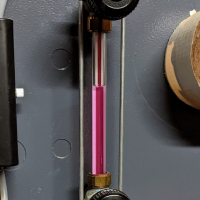Welcome! Here are the website rules, as well as some tips for using this forum.
Need to contact us? Visit https://heatinghelp.com/contact-us/.
Click here to Find a Contractor in your area.
316 vs. 316L vs. 316Ti
Options
lemesi
Member Posts: 26
I have a Weil-McLain WGO-3 oil boiler and need a new flue liner. A guy gave me a quote to do the job with a flexible smooth-walled liner from National Chimney. I guess it is 316 stainless steel.
I've found comparisons around the web and discussion on this site about 316L and 316Ti chimney liners. However, I haven't found much on just regular 316. Is 316 a good material for this oil boiler application? Would I be better off with a 316Ti or 316L? I'm looking to get maximum lifespan out of this.
I've found comparisons around the web and discussion on this site about 316L and 316Ti chimney liners. However, I haven't found much on just regular 316. Is 316 a good material for this oil boiler application? Would I be better off with a 316Ti or 316L? I'm looking to get maximum lifespan out of this.
0
Comments
-
You can read about it here
https://www.iqsdirectory.com/articles/stainless-steel/stainless-steel-316.html#:~:text=Chapter Three – Stainless Steel 316 Composition and, 2-3 4 more rows
Some types are more corrosion resistant than others.
The "L" and the "TI" are alloy elements added to the standard 316 to alter it's properties0 -
So I do know more or less about the differences in the metals. My question is more about which one is optimal for an oil boiler. Is 316 every bit as good (and long-lived) for my purpose, or is there a benefit to demanding a "better" grade?0
-
I'm not an expert but I'd bet even 304 would serve just fine.lemesi said:So I do know more or less about the differences in the metals. My question is more about which one is optimal for an oil boiler. Is 316 every bit as good (and long-lived) for my purpose, or is there a benefit to demanding a "better" grade?
What's the price difference between a 316 and a 316L liner? As far as I know the pricing of the raw materials is very close if not the same.
Are the different options all from the same manufacturer or does each manufacturer have one?
Single pipe quasi-vapor system. Typical operating pressure 0.14 - 0.43 oz. EcoSteam ES-20 Advanced Control for Residential Steam boilers. Rectorseal Steamaster water treatment0 -
316TI has higher corrosion resistance than other types of stainless, and will usually have a higher cost than other grades of SS.0
-
316 has a pinch of molybdenum for corrosion resistance. The 'L' is for low carbon. It helps minimize intergranular corrosion . The Ti is for titanium. It makes the steel easier to weld and also helps stabilize the grain boundaries, which prevents the steel sensitizing at higher temps. Intergranular corrosion happens around 450-800C in regular stainless steels. It forms chromium carbides at the grain boundaries. It looks like pitting and rust in what used to be a 'stainless' steel. 316L has been the standard for many years for oil and coal but the Ti variant is the most common now. 304 is better for solid fuel because it can resist intergranular corrosion at higher temps. However, the temps of a chimney fire are far too much to stop this corrosion so any liner that has suffered a chimney fire should be replaced even though UL1777 tests 3 times at 2,100F x 10 minutes each. A lot of Class A factory chimneys are listed for use with solid, liquid, or CAT I gaseous fuels. Most of these insulated chimneys use a 444 or 430 stainless inner liner relying on the high nickel content for corrosion resistance. AL29-4c, which is used for condensing appliances has 29% chromium/ 4% moly. However, even this super ferritic ss can't stop the corrosion encountered with pellet venting when they burn shelled corn. The minerals in the corn for salts or acids that are simply too much. Battelle Labs ran a bunch of tests on stainless steels for heat exchangers and that's where they got the idea for super ferritics. The original Ventinox stainless liner was 321ss but has not held up well and almost never used anymore. 321 was used un jet engine exhaust nozzles. So, use 304 for sinks, 316L or 316Ti for gas or oil and AL29-4c for CAT IV condensing furnaces and boilers.
HTH2
Categories
- All Categories
- 85.6K THE MAIN WALL
- 3K A-C, Heat Pumps & Refrigeration
- 51 Biomass
- 423 Carbon Monoxide Awareness
- 71 Chimneys & Flues
- 1.9K Domestic Hot Water
- 5.2K Gas Heating
- 92 Geothermal
- 149 Indoor-Air Quality
- 3.2K Oil Heating
- 60 Pipe Deterioration
- 850 Plumbing
- 5.8K Radiant Heating
- 375 Solar
- 14.5K Strictly Steam
- 3.2K Thermostats and Controls
- 51 Water Quality
- 38 Industry Classes
- 55 Job Opportunities
- 18 Recall Announcements


